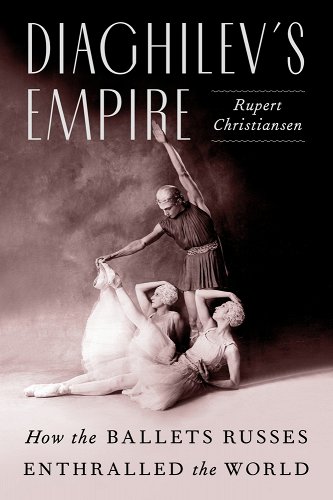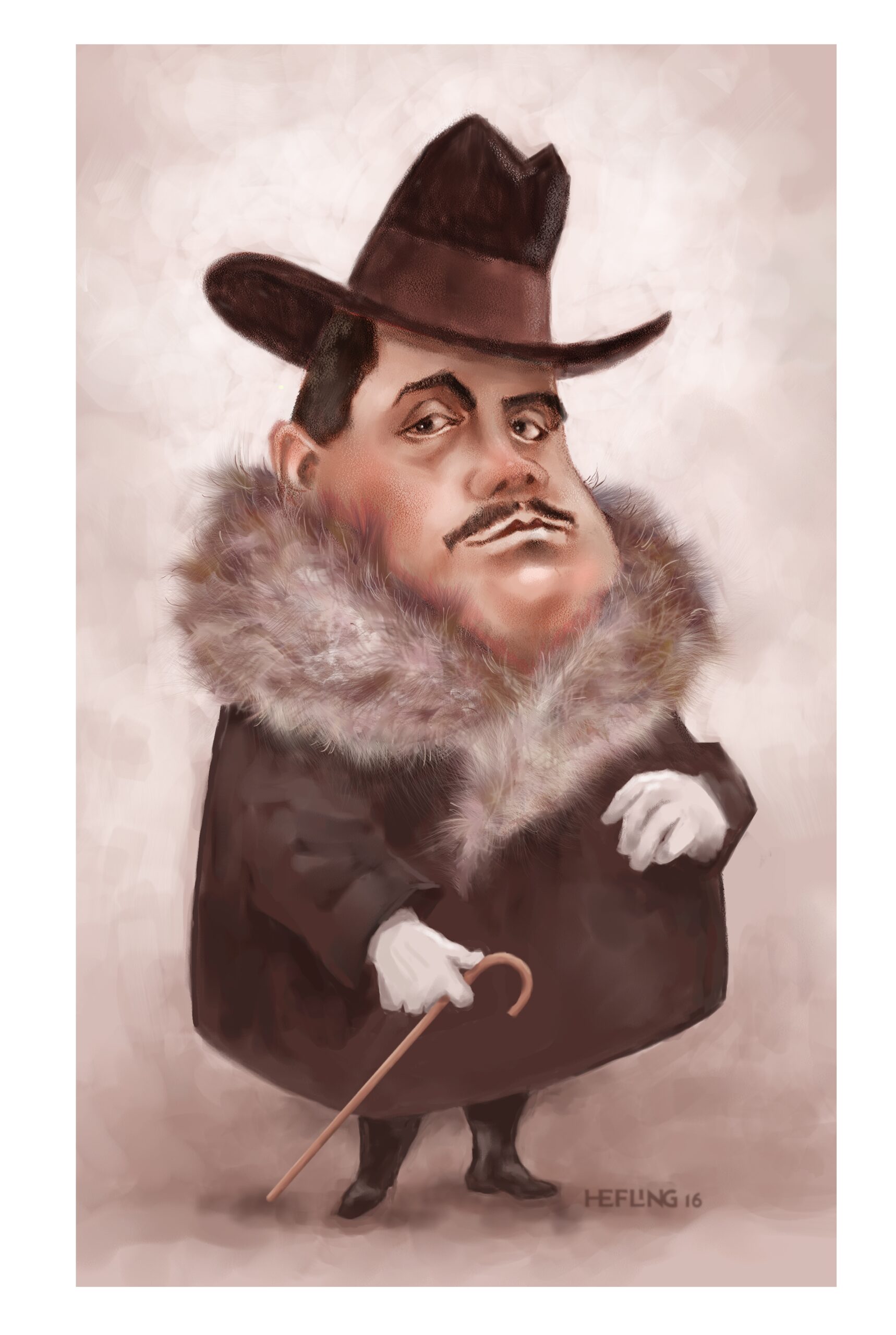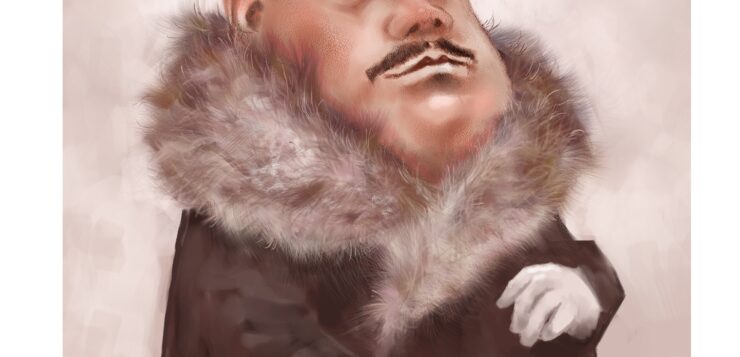 DIAGHILEV’S EMPIRE
DIAGHILEV’S EMPIRE
How the Ballets Russes Enthralled the World
by Rupert Christiansen
Farrar, Straus and Giroux. 373 pages, $35.
THE BRITISH DANCE and opera critic Rupert Christiansen has written a history of Sergei Pavlovich Diaghilev’s Ballets Russes that is not aimed at scholars or specialists. Referring to his morbid addiction to “watching, thinking or dreaming about classical dance and dancers,” Christiansen chooses “to [make]connections that can explain the allure of ballet to those uninfected with my mania.”
His brisk story starts with the extraordinary hold Michael Powell and Emeric Pressburger’s post-World War II cinema melodrama The Red Shoes had on a populace living in the “drab and derelict” war-scarred cities of Europe. The movie’s “gloriously excessive Technicolor,” he maintains, fed “a primal human need.” A popular surge of interest in ballet had not been seen like this since the early decades of the century, when the Ballets Russes took Europe by storm.
Christiansen writes a cultural history with considerable verve. His wit and sharp judgments—of Sergei as a youth eager to be stylishly cosmopolitan, of the Renaissance court culture that lent the ballet early models of elegant gesture and grace, of the “lascivious old gents” who ogled young women’s legs at Music Hall performances, and of a select audience of self-appointed arbiters of taste, often homosexual—color his story with the passion of a “home team” devotee cheering on Manchester United. But he also writes a richly human story to encourage readers to appreciate Diaghilev for his brazen managerial skills and temperamental amours, which were all-male, all the time. We learn that when Sergei was leaving his hometown of Perm to study law in St. Petersburg, his father arranged for him to lose his virginity to a prostitute. Young Diaghilev caught a venereal disease, which may have accounted for his “irrational repulsion” to the female body. In other contexts, Diaghilev could be warm and respectful toward women, although he often used mature aristocratic women as financial vehicles for the advancement of his cultural projects. Still, achieving his aims required a practiced charm.
Christiansen’s portrait of the self-assured and arrogant Diaghilev offers up an admirable if not always appealing picture of a “chancer”—to use an English term for a scheming opportunist—who, especially in his early years, sometimes failed spectacularly. Before taking up the reins of a ballet company essentially Russian in its tendencies and staffing, Diaghilev enjoyed success as an organizer of art exhibitions and as founder of an ambitious and lavishly illustrated journal called Mir Iskussva, “The World of Art.” The latter undertaking he shared with a group of four St. Petersburg university students who fashioned themselves the “Nevsky Pickwickians.” According to Christiansen, “they considered themselves a cut above their vulgar contemporaries, whose devotion to sports, drinking and womanizing provoked them to scorn.”
Diaghilev knew them via his “darkly handsome” cousin Dima Filosofov, one of its members, who was intellectual, literary, and capable of cutting remarks. Sergei had arrived from Perm to cosmopolitan St. Petersburg, where he shared a bedroom with Dima, who may have been his first love. Precocious Sergei was eager to ingratiate himself with Dima’s exclusive fraternity. The leader of the group was Alexandre Benois. Descended from French stock of the ancien régime, he was “the most sophisticated … and erudite.” Walter Nouvel was a musical connoisseur with demanding standards that he expressed unapologetically. Benois’ friend Lev Rosenberg joined the group late. Bipolar and “secretly cursed with perverse sexual tastes,” he was an art student with a genius for color who would disguise his Jewish origins by changing his name to Léon Bakst.
 In the years before and after the turn of the 20th century, the Nevsky Pickwickians acted as “an informal editorial committee” and unpaid staff for Mir Iskusstva. The magazine was initially supported by Princess Tenisheva and a Russian businessman. When they eventually withdrew their funding of the financially fraught enterprise, the Tsar himself provided support with a three-year grant. The Pickwickians’ interest in the magazine by then had faded. However, despite their sometimes testy relations with Diaghilev—Benois was “infuriated” by the “brash pretentions” of the pushy social climber Diaghilev—they frequently participated in his later efforts to upend the dainty conventions of traditional courtly ballets.
In the years before and after the turn of the 20th century, the Nevsky Pickwickians acted as “an informal editorial committee” and unpaid staff for Mir Iskusstva. The magazine was initially supported by Princess Tenisheva and a Russian businessman. When they eventually withdrew their funding of the financially fraught enterprise, the Tsar himself provided support with a three-year grant. The Pickwickians’ interest in the magazine by then had faded. However, despite their sometimes testy relations with Diaghilev—Benois was “infuriated” by the “brash pretentions” of the pushy social climber Diaghilev—they frequently participated in his later efforts to upend the dainty conventions of traditional courtly ballets.
When Diaghilev brought his ballet to France, Marius Petipa, the French-born ballet master choreographer, who had settled in Russia for three decades to dominate the Tsarist imperial ballet, was becoming old hat. His greatest successes were in the past—first, the procession of ghostly girls in white tulle from La Bayadere, and later, the lavish Sleeping Beauty with a cast of over two hundred and an intoxicating score by Tchaikovsky set in a royal milieu from a 17th-century French fairy tale. The production was an enchantment in 1890, one whose music “bewitched” Alexandre Benois, who claimed late in life that had he not “infected” his fellow Pickwickians by his enthusiasm “there would have been no Ballets Russes and all the balletomania to which they gave birth.”
By the first decade of the 20th century, impresario Diaghilev was importing leading Russian composers and singers to Paris. But his ambitions led him to introduce a new sense of the integrated ballet to the West, in which music, story, costume, décor, and choreography met in a unified gestalt. By then, a younger generation had been making its presence felt, such as Mikhail Fokine, “a handsome and conceited young man” with classical training from the imperial school who was “impatient with Petipa’s academicism.” Fokine had been influenced by the audacious American Isadora Duncan, who danced in Russia barefoot, bare-legged, and without corset in a Grecian-style tunic. While he did not share her disdain for ballet’s conventions, he recognized her distinctive personal response to the music.
In successive productions in Paris and London, the Ballets Russes began presenting the latest in musical composition, with décor and costumes by contemporary artists like Alexandre Benois, Léon Bakst, Cocteau, and Picasso. Choreography and narratives might be drawn from contemporary life, starring one or more from a trio of Fokine’s dancers. Anna Pavlova, “a creature more of the air than the earth,” is said to have performed Fokine’s famous “Dying Swan” solo more than 4,000 times worldwide over a long, commercially-minded career. The dark beauty Tamara Karsavina could “communicate emotional realities as well as elusive fantasies.” A pupil of her father’s at the imperial school, she became a friend of Fokine but was a thorn in the side of the older Pavlova. Finally, there was Vaslav Nijinsky, of Catholic Polish ancestry and suspected Tartar blood. A son of professional touring dancers, he acquired a gymnastic athleticism in traditional folk dances, which matured when he whizzed through ballet school in St. Petersburg and, by age eighteen, was partnering “all the star ballerinas.”
Unusual in his physical dimensions—at five foot, four inches tall, Nijinsky was short, with sloping shoulders but “rock-solid thighs and bulbous calves”—the more eccentric aspect of his manner was in his personal comportment. Christiansen proposes that in our time Nijinsky might be “diagnosed on the autistic spectrum” given his inability to mingle socially or directly engage in conversation, unless it was with a dance partner. But he would then beat a hasty retreat. Composer Igor Stravinsky, one of Ballets Russes’s mainstays, noted “curious absences in [Nijinsky’s] personality,” which may hint at his later descent into mental illness. Not “obviously handsome,” Christiansen writes, “his erotic allure exuded a disturbing perfume of the Uranian ‘third sex.’”
However, while not himself homosexual, Nijinsky was taken under the wings of successive older suitors as a male favorite in a manner accepted in upper-class Russian circles, where “mature men of rank amusing themselves on the side with pretty serf boys or bathhouse attendants was … laughingly accepted as ‘gentlemen’s mischief.’” By the time Diaghilev “inherited” young Nijinsky, during the 1910 Paris season, the dancer had previously been the boy toy of a wealthy “thirty-something” prince and “man about town” who set him up in a luxurious apartment, paid for extra ballet lessons, and lavished “his impoverished mother and sister with hampers of food.” Christiansen suggests that Nijinsky was “perhaps only politely compliant in the bedroom” and was eventually passed from the prince “to a Polish count and thence to Diaghilev.”
While their relationship may have been transactional, Diaghilev did by 1912 see an element of genius in his 23-year-old lover and imagined that the curiously self-contained youth might push the ballet “out of the realms of fairy story and lurid romance into uncharted aesthetic territory.” Diaghilev set him the task of devising a dance to a “voluptuous” ten-minute long tone poem by Debussy of 1894, Prélude à l’après-midi d’un faune. If Nijinsky had a hard time verbalizing his vision during rehearsals, he still achieved a kind of primitivism that renounced “graceful poses … no pirouettes or jetés, indeed nothing that would commonly be called dancing.” The piece also proved sexually shocking. Nijinsky as the faun was covered in a “fig-leaf body-stocking” designed by Bakst. The faun, “lounging in a rocky landscape,” spies a group of nymphs seeking to bathe. He zeroes in on one of them, but she rejects his advances and drops her shawl as she flees. The faun snatches and caresses it “before laying it on the ground, lowering himself on top of it and graphically arousing himself to orgasm.”
Diaghilev had tactically maneuvered to seat a first-night audience filled with prominent celebrities and “a glut of high society.” He was ready for a scandal. The audience responded to Faun with a mix of cheers and catcalls. In the coming days, divided press coverage ramped up public interest and, soon enough, future performances were sold out.
A fresh controversy followed in the 1913 season with Le Sacre du printemps, a 35-minute ballet scored by Stravinsky, choreographed by Nijinsky, and centered around a patriarchal tribe that celebrates earth’s seasonal renewal and fertility, ending in the sacrifice of a young virgin. The score was “often violently dissonant and strident” with a “hammering intensity” at a tempo “faster than the dancers could humanly keep pace with.” The dance movements were anti-classical, the peasant costumes “cruelly uncomfortable,” yet at Nijinsky’s relentless insistence, precision movements were required. The premiere in May 1913 provoked a legendary furor among an audience of ballet devotees, anti-modernist rabble-rousers, and a distracted public that was “from the beginning restless, laughing, whistling, making jokes.” Insults and snarky comments were “lobbed between factions” while laughter and “scornful clapping” continued as the dancers performed “without flinching.”
Focusing on Diaghilev’s career and personal life, Christiansen’s book necessarily packs a large cast of characters. Diaghilev’s lovers form a daisy chain of malleable youths who seem to know the sexual score. Nijinsky is dispatched after getting swept up by Romola de Pulszky, daughter of a renowned Hungarian actress whom he marries following a brief acquaintance aboard the ship that was taking the Russes company—without Diaghilev—to a South American tour. Needing to replace Nijinsky “both in his bed and on his stage,” Diaghilev lands upon Leonid Massine in the corps of the Bolshoi Ballet. Massine, a “cool customer,” submitted to the impresario’s “offers” despite his indifference to the sexual arrangement. Boris Kochno, a White Russian youth who fled Moscow in 1917, was eventually introduced to Diaghilev in 1920 by an older bisexual friend. He became Diaghilev’s loyal and lasting personal secretary and administrative assistant, if not his permanent bedmate. After the Great War, when the company took its new base in Monte Carlo, the ambitious Patrick Healey-Kay, a middle-class English lad, briefly Russified himself as “Patrickieff.” He was signed up by Diaghilev after an audition in London. He changed his name to Anton Dolin and went off to Monte Carlo, “where Diaghilev took him under his wing and into his bed.” Years later, Dolin confessed that the impresario’s needs were “straightforward, rather adolescent, and did not involve any form of penetrative intercourse.”
Christiansen is excellent on the influence of Diaghilev and the Ballets Russes following the master’s death in Venice in 1929. Just as the author has detailed the company’s rollercoaster of financial ups and downs, and Diaghilev’s sometimes desperate coming up for air, the final two chapters, a kind of epilogue following Diaghilev’s death, trace the rivalries and internecine struggles that took place, though the company managed for a time to remain intact. Even more engaging is Christiansen’s coverage of the various personalities in the field who kept ballet alive throughout the 20th century, a list that includes Vassily de Basil and his Ballets Russes de Monte Carlo; dancer and choreographer George Balanchine and his brief but notable Les Ballet 1933, financed by Coco Chanel, Cole Porter, and Surrealist influencer Edward James; Ninette de Valois’ Vic-Wells Ballet, which would become the Sadler’s Wells Ballet and, finally, the Royal Ballet; the teacher Marie Rambert and her eponymous ballet company; and American Lincoln Kirstein, who inveigled Balanchine to leave France and establish a ballet school—the School of American Ballet—as well as successive dance companies that culminated, in 1948, in what became the premier ballet company in America, the New York City Ballet.
Every dancer of note in the past century makes an appearance in Rupert Christiansen’s love letter to the ballet, including the Ballets Trockadero de Monte Carlo, the delightful drag company that both does not take itself seriously but takes ballet and its history for gospel. Christiansen has written a most engaging valentine to his favored addictive drug: the classical dance in our time in all its variety, melodrama, excess, and pathos.
Allen Ellenzweig is the author of George Platt Lynes: The Daring Eye.






